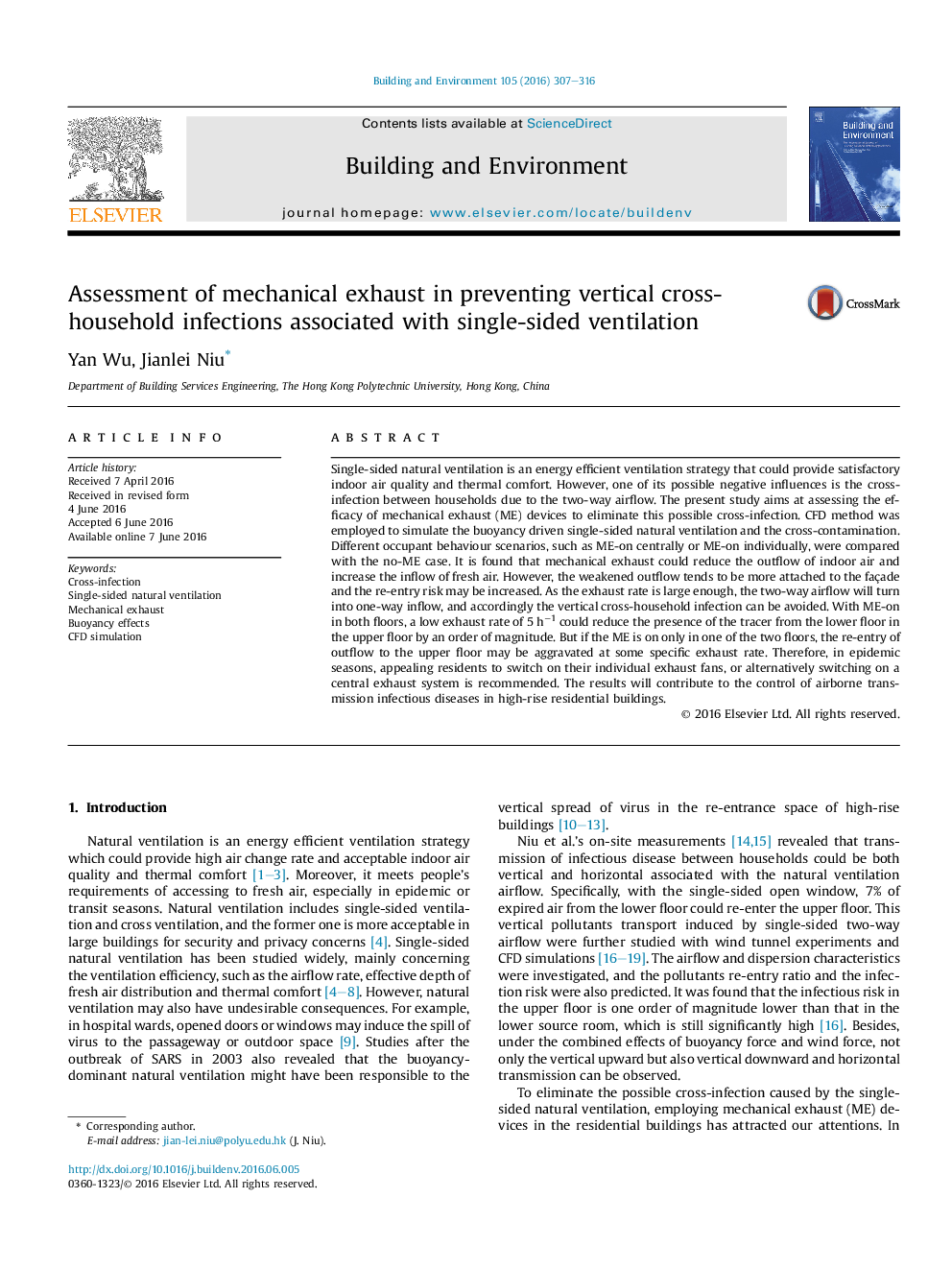| Article ID | Journal | Published Year | Pages | File Type |
|---|---|---|---|---|
| 6699041 | Building and Environment | 2016 | 10 Pages |
Abstract
Single-sided natural ventilation is an energy efficient ventilation strategy that could provide satisfactory indoor air quality and thermal comfort. However, one of its possible negative influences is the cross-infection between households due to the two-way airflow. The present study aims at assessing the efficacy of mechanical exhaust (ME) devices to eliminate this possible cross-infection. CFD method was employed to simulate the buoyancy driven single-sided natural ventilation and the cross-contamination. Different occupant behaviour scenarios, such as ME-on centrally or ME-on individually, were compared with the no-ME case. It is found that mechanical exhaust could reduce the outflow of indoor air and increase the inflow of fresh air. However, the weakened outflow tends to be more attached to the façade and the re-entry risk may be increased. As the exhaust rate is large enough, the two-way airflow will turn into one-way inflow, and accordingly the vertical cross-household infection can be avoided. With ME-on in both floors, a low exhaust rate of 5Â hâ1 could reduce the presence of the tracer from the lower floor in the upper floor by an order of magnitude. But if the ME is on only in one of the two floors, the re-entry of outflow to the upper floor may be aggravated at some specific exhaust rate. Therefore, in epidemic seasons, appealing residents to switch on their individual exhaust fans, or alternatively switching on a central exhaust system is recommended. The results will contribute to the control of airborne transmission infectious diseases in high-rise residential buildings.
Keywords
Related Topics
Physical Sciences and Engineering
Energy
Renewable Energy, Sustainability and the Environment
Authors
Yan Wu, Jianlei Niu,
